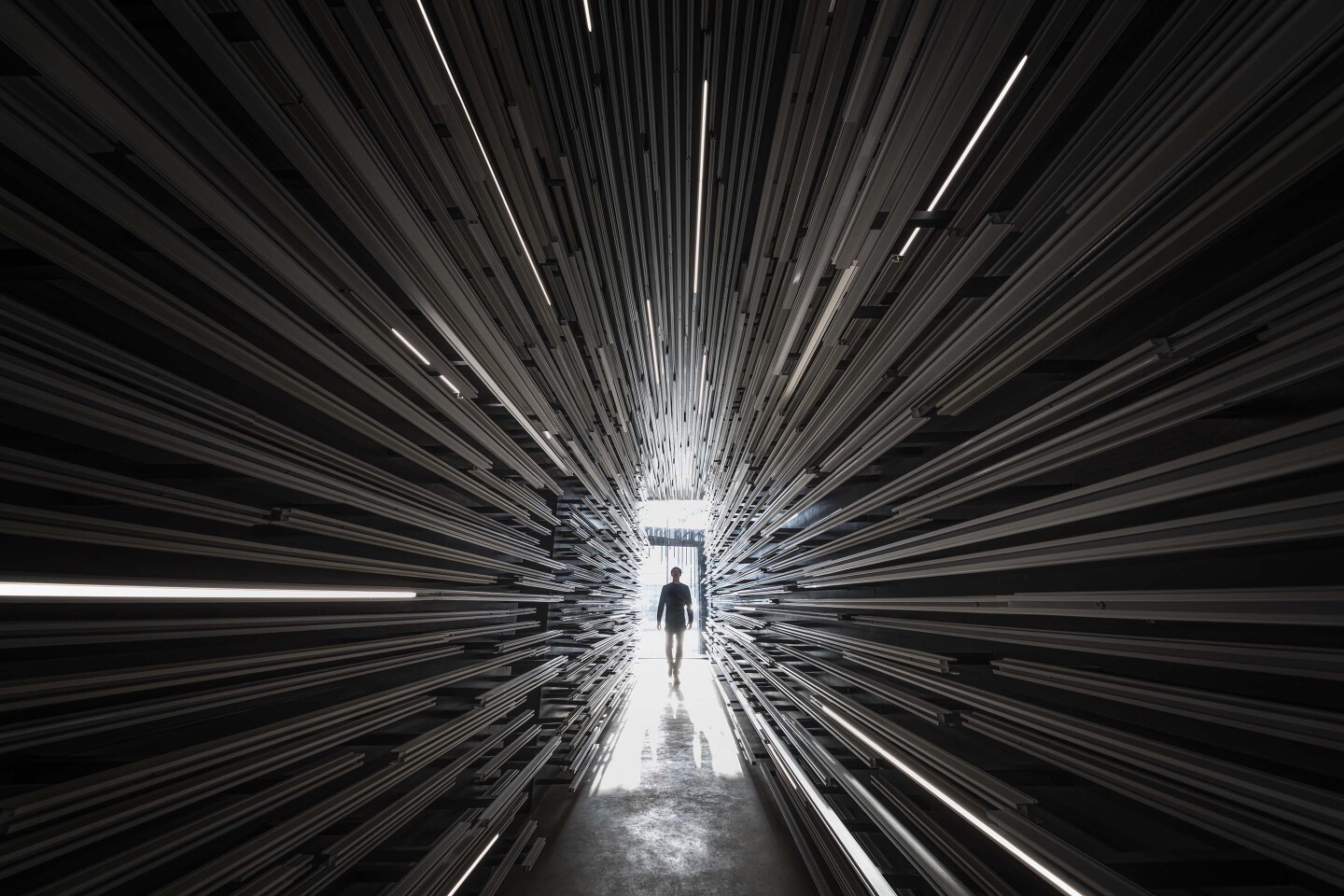Commissioned to create a new aluminum museum in Thailand, local architecture firm HAS design and research could have just gone with a flat metal exterior, but instead the firm hit upon the idea to produce an eye-catching facade that’s made up of tens of thousands of individual aluminum pieces.
The Museum of Modern Aluminum, or MoMa – presumably a nod to the better-known MoMa in NYC – measures 400 sq m (roughly 4,300 sq ft) and is located on the outskirts of Bangkok, in Nonthaburi, Thailand, which has a rich history of producing aluminum. Indeed, the ubiquity of the metal throughout urban Thailand actually inspired the porcupine-like design of the building’s exterior.
“Thailand was once the largest aluminum manufacturer in Southeast Asia at the end of the 20th century,” explained HAS design and research. “Its diverse and abundant aluminum profiles not only satisfied the local market but were once known for exporting to overseas markets. However, the Asian Financial Crisis hit without warning in 1997. This prompted Thailand’s aluminum industry to sell aluminum profiles at low prices to hardware markets around the country in order to survive, resulting in the clutters of advertising signs, balcony fences, and ground floor extensions that make up the present-day Bangkok streetscape.
“The design process of MoMA began with the study of aluminum signboards commonly seen on the streets, and then used aluminum as an element to link the entire building. Through the investigation and research of aluminum profiles, a distinct architectural texture is created, and a new sense of vernacular is discovered in Thailand’s concrete jungle.”

W Workspace
The aluminum pieces that make up the exterior were first created in a factory and then trucked over to the site and painstakingly secured with hidden screws. Many of the pieces are a slightly different color, texture, and length, and most also have integrated LED lighting that glows at night. In addition to being visually striking, the metallic facade actually helps to shade the interior, says the firm.
The use of aluminum continues inside and the museum’s interior is accessed by a tunnel of aluminum strips, where aluminum furniture and lighting fixtures are also installed (unfortunately we don’t have any photos of the exhibits inside). On the top floor, the metal is used to enclose a rooftop garden that hosts seasonal plants which were carefully chosen to encourage the breeding of fireflies.
Source: HAS design and research
Source of Article